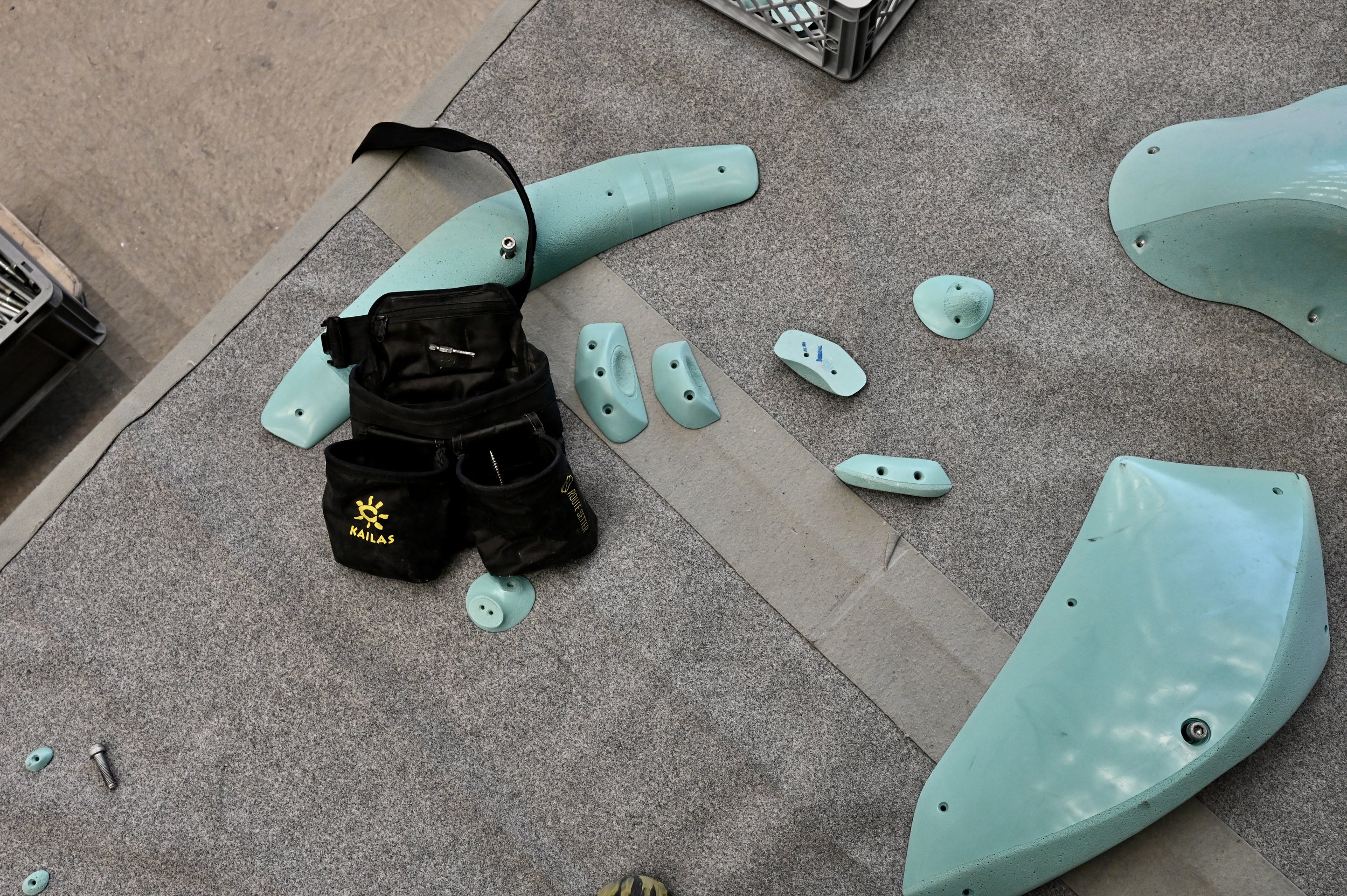BETA BEAVERS
Swiss Association For Routesetters
Welcome to Beta Beavers, the ultimate community for passionate and professional route setters.
Why Does Route setting Matter?
The Swiss case-study
In Switzerland, most gyms rely on the same small team of route setters, limiting diversity and creativity in boulder problems. This system restricts setters from stepping out of their comfort zones, slowing their growth and leading to repetitive routes. In contrast, countries like the UK, France, and Portugal encourage collaboration between gyms and setters, fostering innovation and skill development.
A Swiss association could facilitate similar connections, promoting diversity, fresh perspectives, and better climbing experiences. A more dynamic approach would benefit both setters and the climbing community.
Benefits for GYMS
A key factor for gyms is the quality of their boulders. Amongst the many factors that make up a good boulder, an essential one is ‘diversity’. Having access to many different setters and setting styles will offer climbers a wider panel of movement, and make climbing much more rewarding.
Benefits for SETTERS
The best way for route setters to improve is by setting with different people, holds, and with different wall profiles. This is impossible to do by staying in just one gym. Therefore, if setters have access to a variety of gyms, the setting quality across Switzerland will improve. Ultimately benefiting the whole country and all gyms.
How does Route Setting affect the climbing experience?
-
Challenge and Engagement: Route setters design climbs that are not only physically demanding but also mentally stimulating. A well-set route offers climbers an engaging puzzle to solve, balancing technique, strength, and problem-solving skills.
Fun and Enjoyment: A thoughtfully set route can make the difference between a climber having a great time or feeling frustrated. Routes that are creative and diverse keep the experience exciting, attracting climbers of all levels.
-
Catering to All Skill Levels: Route setters ensure that there’s something for everyone, from first-timers to advanced climbers. They design routes that cater to diverse body types, heights, and climbing styles, fostering inclusivity and accessibility.
Adapting to the Community: Route setters often respond to the specific needs of the climbing community, including setting adaptive routes for climbers with disabilities, helping make climbing more inclusive.
-
Progression: Route setting helps climbers develop and refine their skills by providing a range of difficulties, from beginner-friendly climbs to elite-level challenges. Setters ensure there’s a progression in difficulty, allowing climbers to build their technique and confidence.
Movement Education: Well-set routes expose climbers to different types of movement and body positions. This helps climbers learn new techniques like dynamic moves, static holds, or balance-based sequences.
-
Fostering Interaction: Route setting creates a shared space where climbers can come together, discuss beta, and bond over their climbs. Great routes encourage climbers to collaborate and learn from each other, enhancing the gym's social atmosphere.
Inspiring New Climbers: A well-set gym can inspire and motivate new climbers to keep coming back, strengthening the overall climbing community.
-
Minimizing Risks: Good route setting takes into account climbers' safety by ensuring that falls are predictable and as safe as possible. Setters carefully plan the placement of holds, the distance between clips, and fall zones to reduce injury risks.
Consistency: Professional route setting maintains consistent difficulty levels across different climbing walls and gyms, making climbs fair and safer for everyone.
-
Artistic Expression: Route setting is a blend of technical skill and creativity. Setters use holds, walls, and space to craft routes that are visually appealing and engaging to climb. Each climb can tell a story or evoke a particular theme or style of movement.
Evolving the Sport: Route setting drives innovation in climbing by introducing new challenges and fresh ideas. This creativity keeps the sport evolving, inspiring climbers and setting trends in movement and technique.










